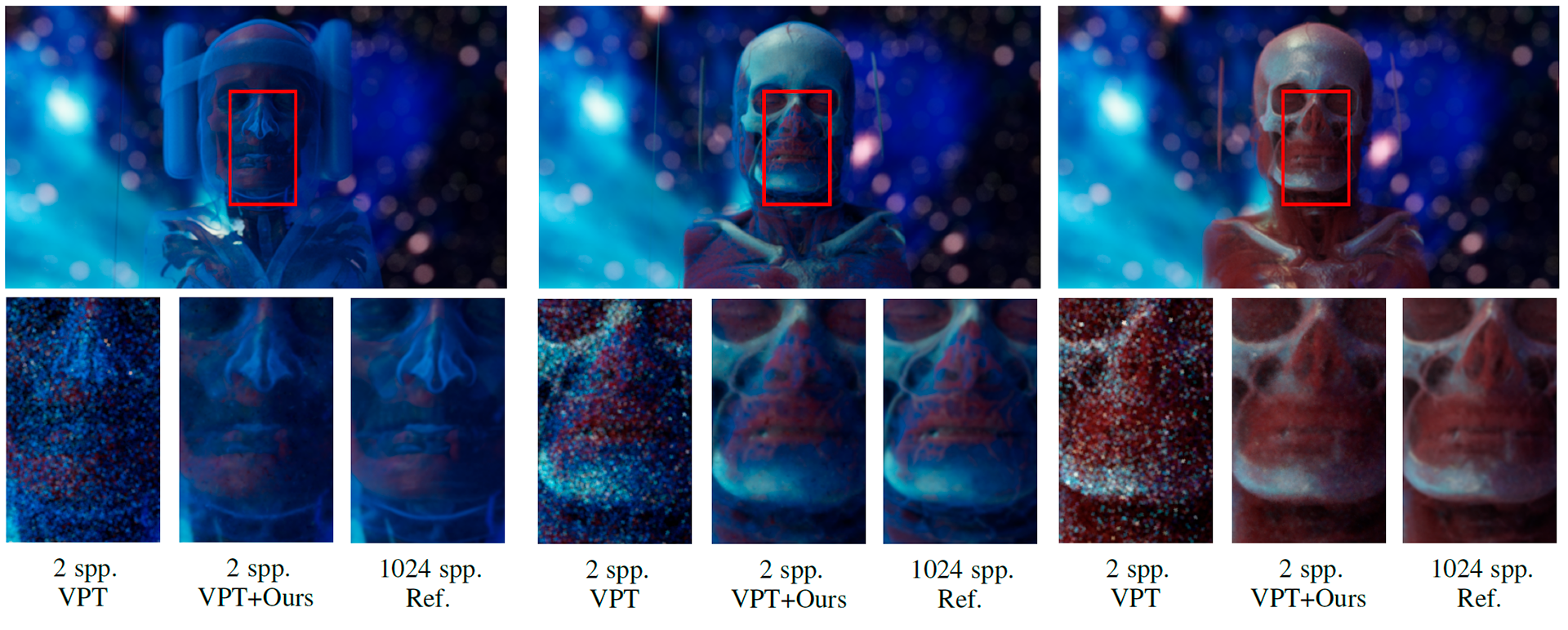Real-Time Denoising of Volumetric Path Tracing for Direct Volume Rendering
Jose Iglesias-Guitian, Prajita Mane, Bochang Moon
External link (DOI)
View presentation:2021-10-27T13:00:00ZGMT-0600Change your timezone on the schedule page
2021-10-27T13:00:00Z

Fast forward
Direct link to video on YouTube: https://youtu.be/zMbNUhlLgIE
Keywords
Volume rendering, global illumination, path-tracing, participating media, image-space filtering, real-time denoising.
Abstract
Direct Volume Rendering (DVR) using Volumetric Path Tracing (VPT) is a scientific visualization technique that simulates light transport with objects' matter using physically-based lighting models. Monte Carlo (MC) path tracing is often used with surface models, yet its application for volumetric models is difficult due to the complexity of integrating MC light-paths in volumetric media with none or smooth material boundaries. Moreover, auxiliary geometry-buffers (G-buffers) produced for volumes are typically very noisy, failing to guide image denoisers relying on that information to preserve image details. This makes existing real-time denoisers, which take noise-free G-buffers as their input, less effective when denoising VPT images. We propose the necessary modifications to an image-based denoiser previously used when rendering surface models, and demonstrate effective denoising of VPT images. In particular, our denoising exploits temporal coherence between frames, without relying on noise-free G-buffers, which has been a common assumption of existing denoisers for surface-models. Our technique preserves high-frequency details through a weighted recursive least squares that handles heterogeneous noise for volumetric models. We show for various real data sets that our method improves the visual fidelity and temporal stability of VPT during classic DVR operations such as camera movements, modifications of the light sources, and editions to the volume transfer function.